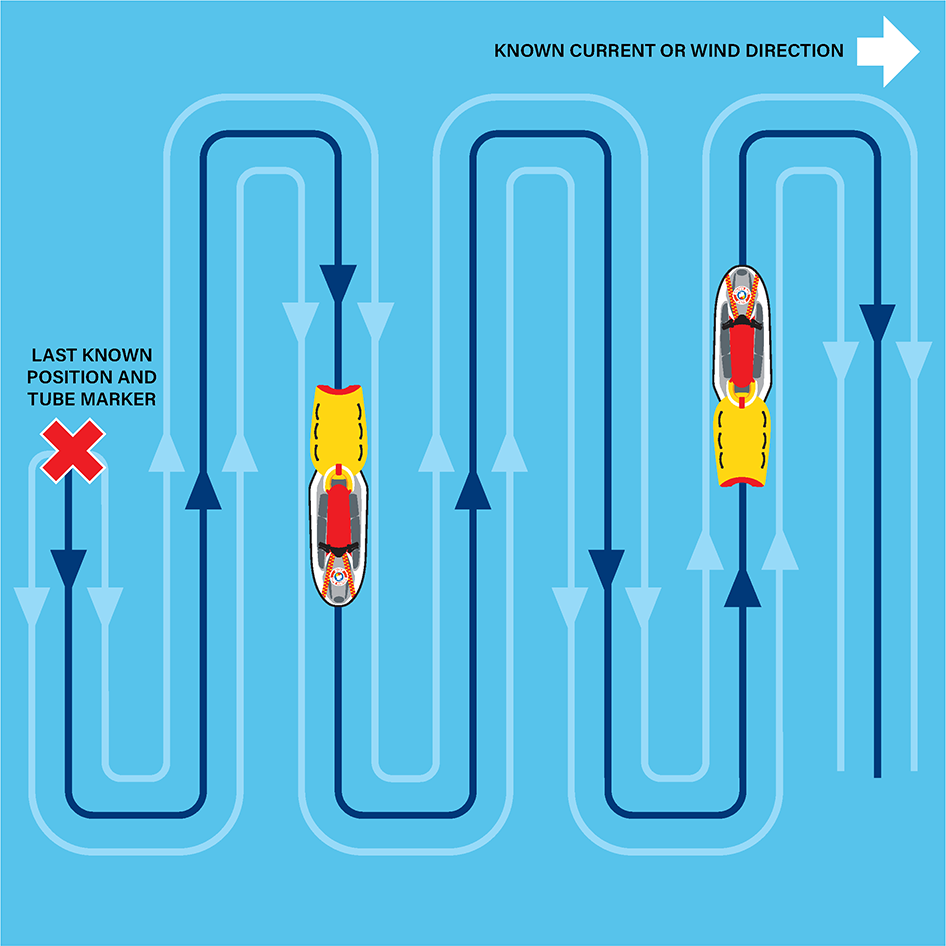For any water-based search to have a good chance of success, the search must be carried out in a methodical fashion—that it starts in the place where the missing person is most likely to be located and also ensuring it covers the area thoroughly.
Whichever search pattern is used, it must be suitable, feasible, acceptable and safe. The time, water conditions, wind drift and water currents will all influence decisions about which search pattern to use. Marking dye may also be used to help determine the water movement to assist in selecting the appropriate search pattern.
The distance between each leg of the search will depend upon these factors, with the guiding principle being to ensure the search area is visually covered.
The objective of surface searches is to look from above the water surface for submerged objects.
A number of patterns may be applied, a sample of common searches are listed on the following pages.
Line search
Line search pattern, also known as parallel line search, involves team members moving in a straight line from the last know location in the direction of the wind or current. The distance between personnel participating will depend on factors including:
- What gear and equipment they are using
- The depth of the water
- Sea conditions
- Water clarity—the less clear the water, the closer together the searchers must be
Creeping line
The creeping line search pattern involves moving back and forth in making gradual increments parallel to the previous track. Starting from the last known location, the pattern will follow the measured direction of the current where the missing object or person is likely to have also drifted.
Square
The square search pattern is often used by powecraft (although can be used by swimmers) and involves the search starting from the last known location and moving outwards in a square pattern.
It is typically used where there is little ocean current or drift, or where it is highly likely the object has remained static.
Interoperability
SLS Powercraft may be working with other assets and agencies when conducting a search. In many SAR operations, RWCs and IRBs can work as a vital link with helicopters in bringing a mission to a successful conclusion. Check your local SOPs on procedures for working with helicopters.








